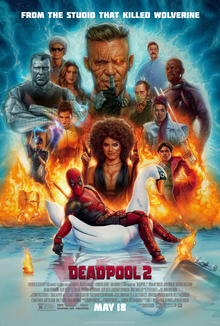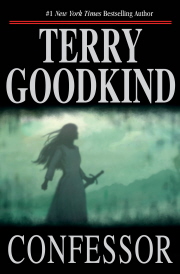
The
quality of this game is somewhat polarizing, but one thing most can
agree on is that it has a good soundtrack, the first in the series by
composer Yoko Shimomura, opening with a beautiful piece that commences
with piano flourishes then intensifies with other instruments, before
softening again. It proceeds to the title screen theme, “Nostalgic
Song,” which is a somewhat somber piece consisting mostly of woodwinds
in the beginning but again flourishing with other instruments before
looping. “World of Mana” is a soft piece that plays on the overworld
when the player is placing objects to symbolize towns and dungeons.
The
“Song of MANA” is the main opening theme that plays once the player
places the mailbox symbol on said overworld, with Swedish lyrics that
would sound alien to both American and Japanese players. “Places of
Soul” is another peaceful piece that plays at the player’s base of
operations, with lovely use of woodwinds. The theme for the town of
Domina follows, which is another lovely piece, although some reviewers
for some reason have said that Shimomura’s town themes were weak, with
which this writer adamantly disagrees, given the bounciness of the tune.
“Daedal’s
Organ” is another piece played in said town, which, true to its
identity, emphasizes the organ, sounding bouncy as well. “Wanderer’s
Path” indicates a change of tone, given its intensity, and somewhat
rocky nature, with nice orchestration. “Pain the Universe,” one of the
boss themes, also indicates a change in tone, given its electric
disposition, and while some may argue it clashes with the rest of the
soundtrack, it’s still a nice, energetic piece. The soundtrack softens
back up with the theme of the town of Gato, which starts off softly but
has intense orchestral flourishes.
The soundtrack intensifies
again with “Earth Painting,” which effectively captures the earthly tone
of its moniker. “Marginal Beast” sounds to be another boss theme, less
intense than “Pain the Universe” but nonetheless with a nice rocky feel.
The theme for the town of Roa is one of the softest themes in the
album, with its main notes consisting of bells, with some woodwinds in
the mix. “Everyday Dream ~Spirit’s Song” is another soft piece with
synthesized vocals alongside the harp notes that give it an enigmatic
feel. “To the Sea” has a tropical feel that very well conveys the theme
of sailing.
The theme to Popula is played mostly with piano, and
has an upbeat nature with xylophone and accordion flourishes. “Everyday
Dream” is another vocalized piece that sounds beautiful an enigmatic
like its longer-titled predecessor. “Calmly Traveling,” despite its
name, is a slightly-intense piece with an emphasis on drums that give it
a good rhythm. “Bedight Orbit” is a funky-sounding track emphasized by
percussion and having flourishes that make it feel somewhat like a disco
piece. “The Wind Sings of a Journey” further continues the soundtrack’s
dive into various genres, nuanced by Celtic woodwinds.
The theme
to the city of Geo sounds somewhat bouncy, starting out softly but
intensifying at points, with many xylophone flourishes. “Memory of
Running” is another piece containing hard and soft sections, with drums
mainly emphasizing its intense parts. “Darkness Nova” is in contrast a
mostly hard piece with electric guitars augmenting its intensity. In
contrast, “Pastoral” is a peaceful piece played mostly with woodwinds
that definitely gives a feel of the countryside. “Ranch Night” is a
similarly serene track, although it doesn’t seem exactly to fit an
evening at a ranch or farm, despite being good.
“Maker’s Gallop”
is an upbeat piece that sounds somewhat mechanical, as if one is riding a
mechanized animal or other form of transportation. “Dreamseed Fruit,”
true to its identity, sounds like someone is in a dream, and is mostly a
soft-sounding piece indicative of a calming lullaby. “Good Things
Happen!” is a brief jingle that likely plays during a positive gameplay
moment during a playthrough, and fits the rest of the soundtrack. “Let’s
Play the Organ” is another brief track that sounds like a partial organ
remix of the town theme for Domina, having two “parts.”
“Nocturne”
appropriately sounds like a nighttime piece played with a piano and is
mostly soft and calming. “Digger’s Song – Song of Spelunkers”
appropriately sounds like an earthy jingle with vocal flourishes of
evident miners. “Peaceful Song,” unsurprisingly, is a peaceful track
played with woodwinds and a harp. “Sorrowful Song,” moving on, is a
sad-sounding piece that very well conveys a saddening moment. “Joyful
Song,” like its other brief entries in the “Song” series, is a cheerful
piece, played with strings and woodwinds. “Mysterious Song” rounds out
the series of brief tracks, appropriately sounding like an enigmatic
piece.
“Where Truth Can Be Found” is a dark, but not satanic,
sounding piece that very well conveys the crusade in finding fact. “Two
Feelings – Lucemia” has an enigmatic feel to it, with a constant
xylophone instrumentation and woodwind flourish. “Irwin on Reflection”
is another rocky piece, albeit slightly softer, which sounds like it
would belong during a battle. “Distant Truth” is softer, but has
significant drum flourishes, and definitely does sound like the
characters accompanying the music are seeking distant truth.
“Overlapping Destinies” is another mysterious piece that well upholds
its moniker, starting softly before intensifying.
“Bondage
Bestowed” is by contrast a mostly-sad piece likely played during a
somber cutscene, performed mostly with woodwinds. “Fiery Castle” sounds
to be a dungeon track, definitely sounding as though it would be played
in a fortress of flames, given its intensity. “Leading into Prosperity”
is another intense track, and doesn’t seem to uphold its name very well,
given its brief soft moments, although it’s still a good piece. “The
One Who Waits for the Breath of Destiny,” however, does indeed uphold
its longwinded moniker, sounding peaceful at first but evolving into a
militaristic tune.
“Blue Gloom” is a peaceful-sounding twinkly
piece that does sound like it would play during a somber moment
emphasizing azure color. The brief “Jewel Thief Sandra Appears!” has a
Middle-Eastern feel to it, and definitely fits the character. “Sparkling
City of Ruin” is a mostly peaceful yet melancholy-sounding track, with
occasional violin flourishes and played mostly with piano. “Treasured
Love” is definitely different in style, played mostly with the organ,
and while it doesn’t exactly sound like a romantic piece, it is good and
has a “dark” feel to it.
“Of Glittering Tears” very much sounds
like a sad piece, with harp flourishes symbolic of teardrops, and
woodwinds accompanying. “The Great Virtue of Gathering Mana’s Spirit” is
a beautiful piano piece that has a very mysterious feel to it. “Holy
Palace of Mana” sounds to have an opening similar to its predecessor,
but proceeds to sound like music from another of Shimomura’s
soundtracks, that for
Parasite Eve, definitely indicative of her
overall style. “The Gloaming (Silence of Time)” opens softly with piano
before receiving “dark” flourishes from instruments like the electric
guitar and organ.
One of the final tracks is a remix of
“Nostalgic Song” played on the violin, which is absolutely gorgeous and
does the original version justice. Another remix, that of the opening
vocal track, concludes this soundtrack, which is easily one of Yoko
Shimomura’s strongest works, beating out many of her later work
including her Kingdom Hearts soundtracks, and while some may protest the
various styles used within the music as inconsistent, given the
variation of emotions and instruments, it’s still recommended to fans of
the series and videogame soundtrack aficionados in general.


:origin()/pre00/2537/th/pre/i/2018/266/8/8/odaeysa__archduchess_of_nytinghaem_by_jmg124-dcnmrcv.png)
:origin()/pre00/cf5c/th/pre/i/2018/264/3/e/nythnael__hereditary_archduke_of_atyrlind_by_jmg124-dcnfvr9.png)

:origin()/pre00/8314/th/pre/f/2018/262/b/6/1537412033_lilbluefoxie_c18123_by_jmg124-dcnafo4.jpg)


:origin()/pre00/f388/th/pre/f/2018/260/4/7/draeikysdarweshicolor_by_jmg124-dcn4i62.png)

:origin()/pre00/d5d7/th/pre/i/2018/257/b/f/reyodino_galloermo_by_jmg124-dcmvdg0.png)




:origin()/pre00/9a9d/th/pre/i/2018/254/4/4/nytylaea__duchess_of_woelfcastyl_by_jmg124-dcmmw9x.png)



:origin()/pre00/603e/th/pre/i/2018/252/6/4/milkshake__art_trade__by_jmg124-dcmh96y.png)
:origin()/pre00/efdc/th/pre/i/2018/253/e/4/birbtrade2_by_jmg124-dcmie6q.jpg)

:origin()/pre00/e42b/th/pre/f/2018/250/c/b/linocolor_by_jmg124-dcmafjj.png)
:origin()/pre00/a1f5/th/pre/f/2018/250/d/9/germaine_sheffield_by_deerge-dcm7wv7.png)
:origin()/pre00/b689/th/pre/i/2018/249/f/6/sepparotember___reiodino_papagaio_by_jmg124-dcm7slw.png)
:origin()/pre00/6ebc/th/pre/f/2018/247/5/b/1536109685_worldreviver512_image_by_jmg124-dcm25jc.jpg)
:origin()/pre00/a994/th/pre/i/2018/247/6/5/spiked_punch_wolf_as_emperor_jagang_by_jmg124-dcm249b.png)


:origin()/pre00/32c4/th/pre/f/2018/246/f/5/starlightcolor_by_jmg124-dclyg5l.png)
:origin()/pre00/7725/th/pre/i/2018/246/4/e/1536006349_yukiin_at_by_jmg124-dclygbh.jpg)